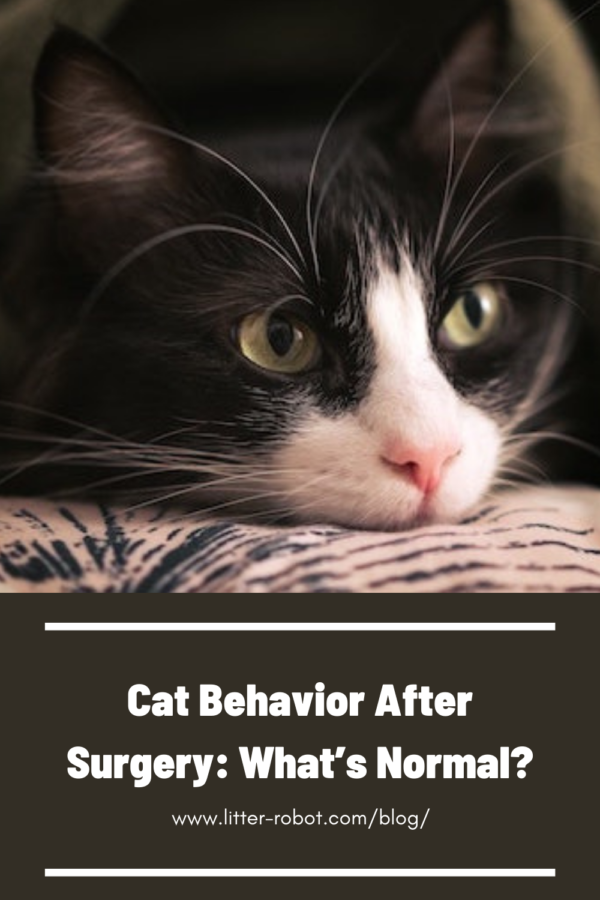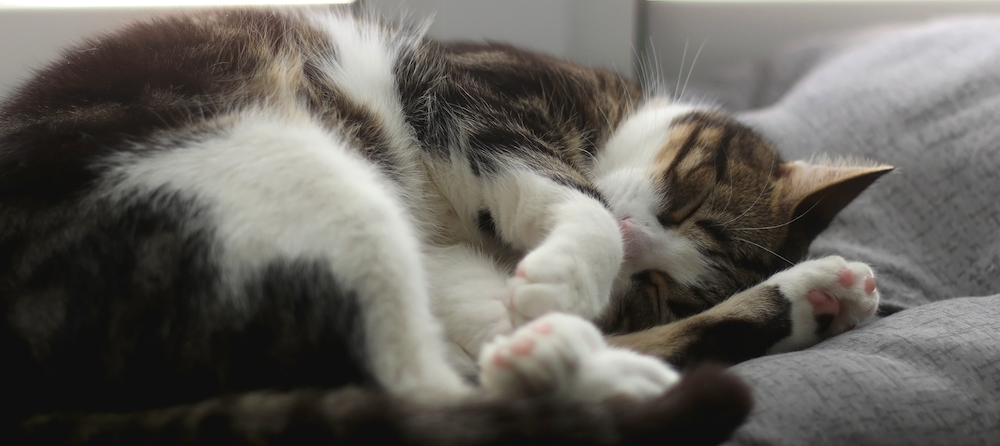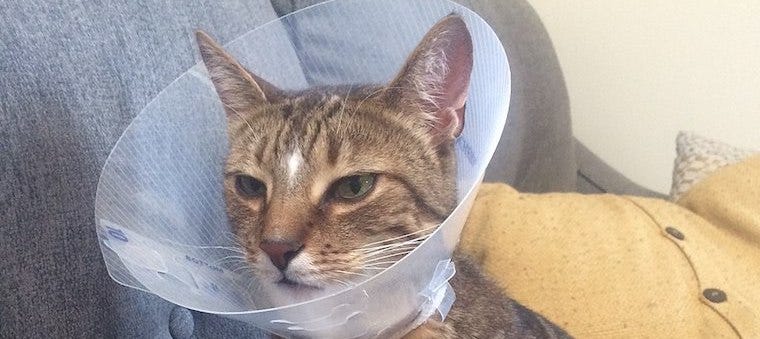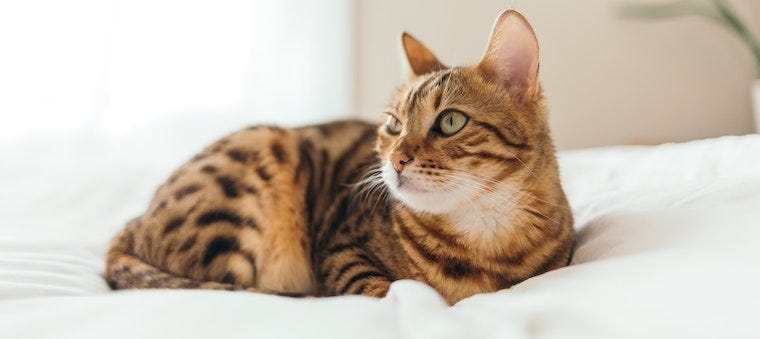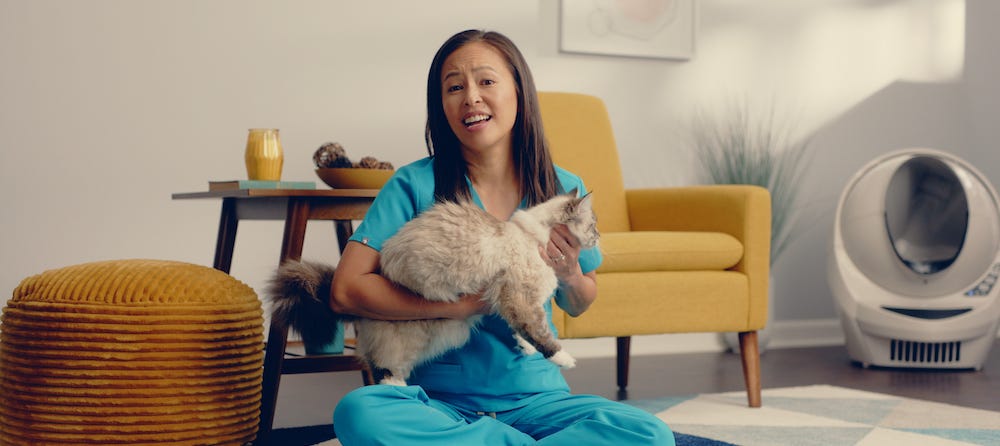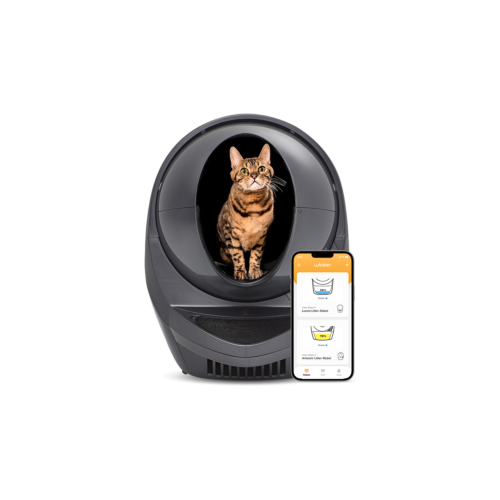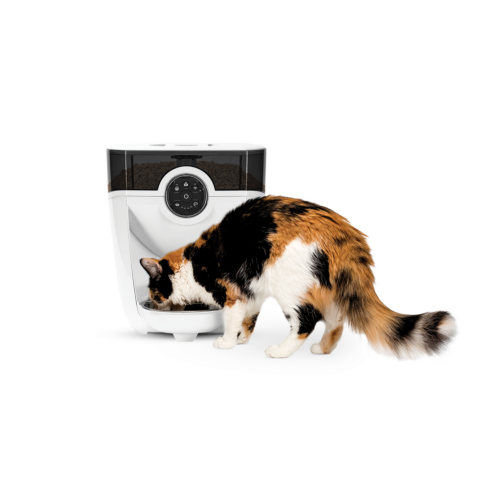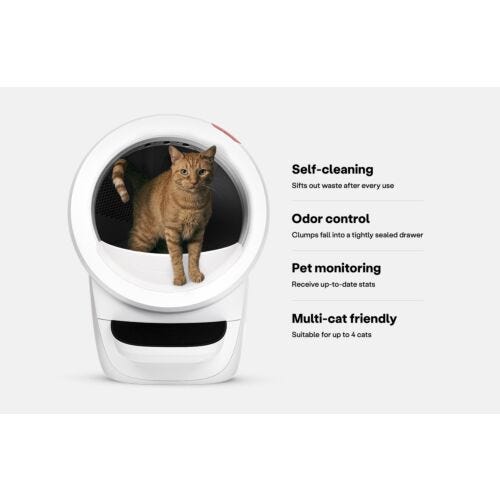Your pet undergoing surgery is stressful enough. But how about caring for your pet afterward? What sort of cat behavior after surgery is normal, and when is there cause for concern? Learn more about what to expect, as well as tips on how to keep your cat from jumping after surgery.
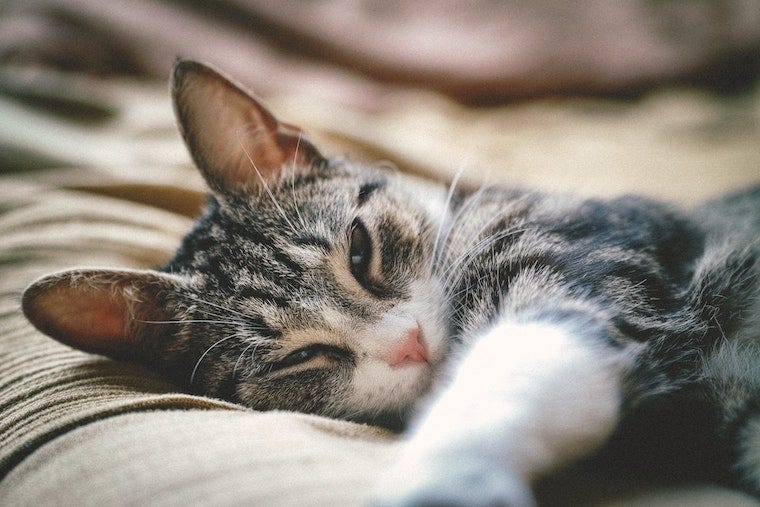
Before surgery: Prepare a recovery room
The best thing you can do for your recovering kitty is to provide a calm, restful indoor environment. A room with minimal obstacles or things to jump onto or off of is ideal, but if you can’t offer a dedicated recovery room, here are a few tips to keep in mind:
- Provide clean, comfortable, and easily accessible spots to sleep, such as cat beds, mats, or blankets on the floor.
- Make sure that food, water, and the litter box are close by. For additional comfort, consider a self-cleaning litter box with a ramp.
- Don’t allow other pets or small children to be around the recovering cat without supervision.
- If possible, remove furniture, cat trees, or perches that would tempt your cat to jump before her sutures/stitches are healed. (Read on for tips on how to keep your cat from jumping after surgery.)
Regardless of why your cat had surgery or underwent anesthesia, it takes time for those medications to get out of your cat’s system so that they can return to normal. Because of this, it is imperative to ensure that they have a safe, calm space to reacclimate.
Cat behavior after surgery
Your veterinarian or vet tech should instruct you on what to expect of cat behavior after surgery. Still, it’s good to have a general understanding of what is normal and when there’s cause for worry.
What is (typically) normal
Of course, what’s normal will usually depend on the severity of your cat’s surgery. In most cases, you can expect your cat to be groggy and lethargic from anesthesia for the first 12 to 24 hours. They may also be a little cranky or aggressive—basically feeling extra sensitive.
Furthermore, your cat may have a decreased appetite for a day or so following surgery. Provide your cat with smaller meal portions than usual for the first 24 hours to decrease the risk of nausea and vomiting.
If your cat had a tube placed in the trachea (windpipe) during anesthesia, they may develop a slight cough. This should diminish over the next several days without any intervention. If it is persistent, contact your veterinarian so that they may check for another cause of the cough such as aspiration pneumonia.
What does a normal incision site look like? The skin surrounding your cat’s sutures may be slightly red or pink in color. You may also notice some bruising a couple of days after surgery. For the first 24-48 hours, you may notice intermittent blood seepage from the incision site or sutures. The amount of leakage is going to be dependent on your cat’s activity level as well. The more the rest and relax, the faster the incision site can start to heal.
Speaking of, your cat may be tempted to lick or chew on her sutures following surgery. If you notice this behavior, you’ll need to put an e-collar on your cat. If your cat was released from surgery already wearing an e-collar, don’t remove it before your vet says it’s okay to do so. Just because you don’t see your feline friend trying to lick the incision site does not mean that they wouldn’t if given the opportunity. It is in the best interest of a speedy recovery to keep that e-collar on. It is very common for cats to appear disoriented and sometimes have a hard time walking around when they first put the e-collar on, but they are extremely agile and will adapt if given time.
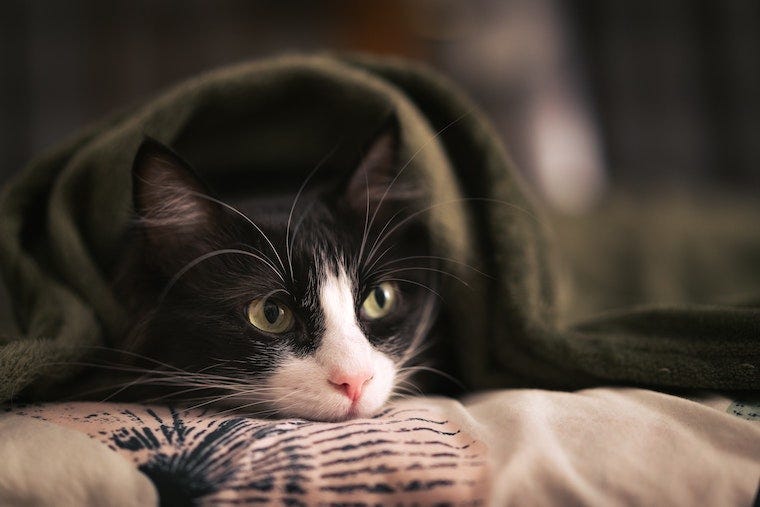
When you should be worried
Extreme behavior may be a sign that your cat is in a lot of pain post-surgery: This includes anything from hyper-aggression and continuous meowing to hiding and withdrawal. Contact your veterinarian if your cat displays any of these behaviors. Remember, if your cat requires pain medication following surgery, your vet will have prescribed it for you. Do NOT give your cat human pain medication such as Tylenol, Advil, or aspirin—these are highly toxic to cats. Also do NOT give your cat over-the-counter pain medication from a pet store without consulting with your veterinarian: just because it’s sold at a pet store does not mean it’s safe.
If your cat is still acting very lethargic or isn’t eating much 48 hours after surgery, contact your vet for advice.
Finally, keep an eye on your cat’s incision site. Contact your vet or an animal hospital if you notice any unusual symptoms, including a moderate amount of blood seepage more than 24 hours after surgery; continuous or excessive blood draining; excessive swelling or redness; or unpleasant smells or discharge.
How to keep your cat from jumping after surgery
Do you have a particularly rambunctious feline? You may have trouble helping your cat or kitten rest (aka stay put!) before her sutures or other injuries are fully healed.
How to keep your cat from jumping after surgery mostly boils down to limiting her options. This means you may need to restrict your cat to one room in the house where there are no tall furniture or window sills that will tempt her to jump.
If such a room isn’t available in your home, you may need to crate your cat for the time being. This solution obviously isn’t ideal for your kitty—but the most important thing is to ensure your cat’s recovery! Make sure to use a large carrier, such as a dog crate, so that your cat doesn’t feel too confined.
Your veterinarian may prescribe a sedative to help keep your cat calm for the first few days post-surgery.
Refer to your cat’s discharge instructions
If you are concerned or unsure while your cat is recovering, you should refer back to your discharge paperwork for guidance. It is pretty standard to have all of the information you should need immediately in that paperwork.
Give your cat’s medications as prescribed
There is a lot to manage when you bring your kitty home after surgery and the best way to ensure that recovery is smooth and as painless as possible is to follow the instructions given to you by the veterinary staff. Usually, someone will go over the medication instructions when they are given to you, but the discharge instructions will also detail when and how to give any medications dispensed to you. Do NOT change the amounts of frequency of those medications without consulting with your veterinarian first.
It’s best to be prepared for cat behavior after surgery. Now you know what is generally normal and when there’s cause for concern. When in doubt, call your veterinarian if you have any worries at all.
Sources:
